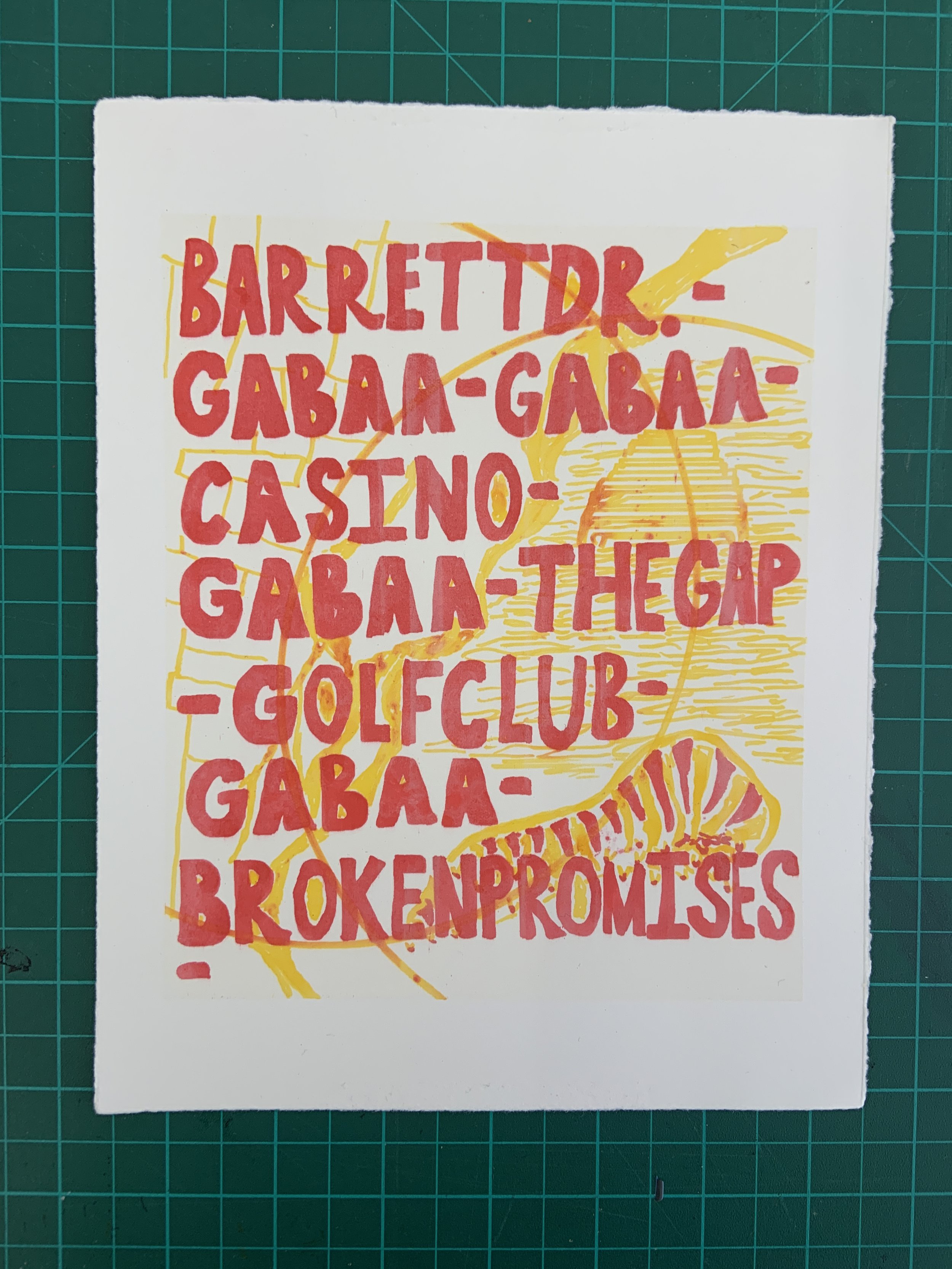I’ve been thinking about the stories that I carry with me onto someone else’s Country; and I have always been on someone else’s Country. Here in Mparntwe, where I currently sit to write this on Arrernte Country, I have brought the story or imagined idea of ‘gaba’, a Bisaya concept of ‘immanent justice’. Some think of it like a curse, but I think it’s more closely related to one’s actions or conduct in this life and the idea that ‘moral transgressions’ will inevitably bring about gaba.
While I think what underpins the use of gaba is probably the desire for social and behavioural control to uphold the status quo in a pre/post/whatever-colonial Philippines, and the kind of thing your most superstitious tita or tito threatens you with at a family gathering - but heyyy - I still feel drawn to it. Here and now in this town surrounded by buildings, landscapes, and people that feel out of place, myself included, and the racial and social disparities that exist within this continent called Australia.
When I arrived, WTS put a few text resources in my studio for visiting artists, including this book called ‘A town called Mparntwe’ written by David Brooks in collaboration with the Arrernte people to share some stories that we visitors should know about here. In this book, you can see the illustrator’s impressions of the town’s surrounding landscapes with references to the creation stories of caterpillars and wild dogs, the ancestral beings of the Arrernte. They formed the landscapes that I now see and hold an enduring place on Country, while somehow sharing space with things like Hungry Jack’s and the old Beaurepairs shop.
Through the lens of gaba, the story that I’ve been most drawn to from this book has been about Barrett Drive. It goes that when the NT government first planned to build this road that they were in close consultation with the Arrernte people. During these consultations, the Arrernte people raised concerns about the proposed design because it would destroy part of a sacred caterpillar site, the Ntyarlkarle Tyaneme. The project stalled as negotiations were made and the government promised not to take any action until an agreement could be reached by all parties. However, the book explains that during the quiet Christmas period one of the Custodians discovered that the tail of the Ntyarlkarle Tyaneme was missing, revealing that the government had broken their promise and ploughed ahead with the build to the detriment of both the site and the trust of the Arrernte people.
Barrett Drive has become known as Broken Promises Drive, a straight and wide asphalt road that now leads to affluent places like Crowne Plaza, Lasseters Casino, Alice Springs Golf Course, etc. I’ve driven and walked along here and visited the Lasseters pool and the Hanuman restaurant. I’ve watched the traffic pass through, the cars, 4WDs, buses, bikes, and people wandering up and down this very same part of Country. I wonder if those decision-makers now feel a sense of reprieve seeing what’s been built since they broke their promises for the capitalist conception of ‘progress’. I wonder more at what point gaba, in all its inevitability, will come for those that broke their promises and continue to break promises on stolen land.

